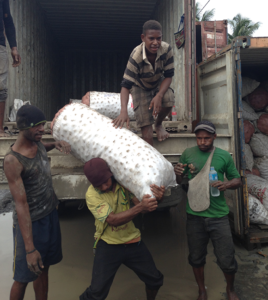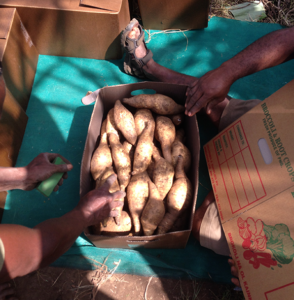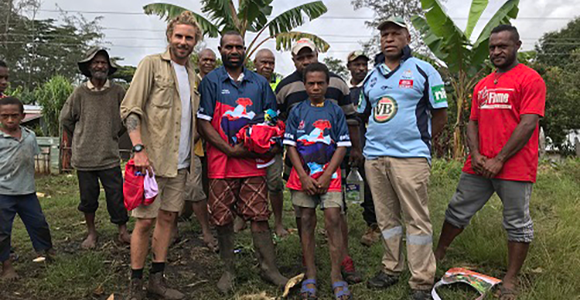Papua New Guinea’s sweet potato market has the opportunity to grow significantly. Researchers are working with farmers to implement new technologies that are predicted to transform sweet potato production.
Locals living in the Highlands get 70 to 80 per cent of their sustenance from the consumption of sweet potato, or kaukau.
Yet compared to rice, another diet staple in PNG, the amount of sweet potato sold in local supermarkets is exceptionally low, Kirt Hainzer, a Senior Research Officer at Central Queensland University, tells Business Advantage PNG.
‘The quality of sweet potato available to supermarkets is generally bad, with skin often damaged and an inconsistency in size.’
However, through the Australian Govenrment-funded Transformative Agriculture and Enterprise Development Program (TADEP), the researcher is working with local farmers to improve the quality of the root vegetable.
So far, several strategies have been implemented, including the use of ‘clean seed’ technology.
Transforming sweet potato production

Sweet potato farmers transporting the crops in large 80-100 kilogram bags. Credit: CQ University/Kirt Hainzer
‘Clean seed’, a technique commonly used in the Australian industry, ensures planting material is virus-free. If managed correctly, this results in a stronger crop and better yield.
‘We are anticipating huge growth in supermarket sales as the quality of the produce that is available improves because of the clean seed process we are implementing,’ says Hainzer.
The process takes eight to 12 months and involves growing the clean seed in a laboratory before multiplying it within a screen house and then sharing it with farmers.
‘The quality of produce we are getting from the clean seed in Papua New Guinea is what we get in Australia. We expect supermarket sales to increase on the back of this,’ Hainzer explains.
Chris Bugajim, a Research Officer at the PNG Fresh Produce Development Agency, says sweet potato production has increased by at least 30 per cent for these farmers.
‘We are empowering farmers to build professional relationships with supermarkets and helping them maintain supplier agreements by providing them with the relevant soft skills.’
‘We are seeing transformation in sweet potato production, and hope to see further increases in production with the implementation of irrigation systems in the near future,’ Bugajim adds.
With significant opportunity available for sweet potato farmers, many are making the transition from subsistence to commercial farming.
Supplying formal markets
Moving from subsistence farming to commercial farming requires a change of mindset among farmers, and new skills.
With a large number of local farmers seeking to make the transition, TADEP is providing support with post-harvest strategies and management of supplier agreements.
‘We expect significant growth in commercial farming, providing quality produce for supermarkets and boosting sales.’
‘We are empowering farmers to build professional relationships with supermarkets and helping them maintain supplier agreements by providing them with the relevant soft skills,’ he says.
While improvements to planting and post-harvest processes have led to better quality, road infrastructure remains a major barrier to accessing markets.
‘We are doing our best to work around the challenges of a poor transport network and have trialed a number of packaging techniques as part of this.’
One of these trials involved putting sensors into bags and boxes to measure the temperature and impact while in transit.
Transporting sweet potato

Sweet potato farmers are now using smaller boxes to transport the root vegetable. Credit: CQ University/Kirt Hainzer
Traditionally, farmers have packed sweet potato into large 80-to-100 kg bags, which are often moved roughly during transit.
Results from the sensors outlined there was less damage to the produce if packed in smaller 20 kg boxes, which farmers have since been encouraged to use, Hainzer says.
A number of other post-harvest techniques commonly used in Australia are being shared with farmers in PNG, including removing the vines one week before taking the roots out.
Hainzer explains this is a simple technique to allow time for the skin to harden, reducing the chances of bruising.
This technique also removes moisture, which can minimise fungal issues.
How farmers implement these strategies under local conditions will be critical to the success of the industry, but Hainzer is encouraged by their initial response.
‘With excellent soil and great willingness from farmers to shift the way they are working, we expect significant growth in commercial farming, providing quality produce for supermarkets and boosting sales.’










Speak Your Mind